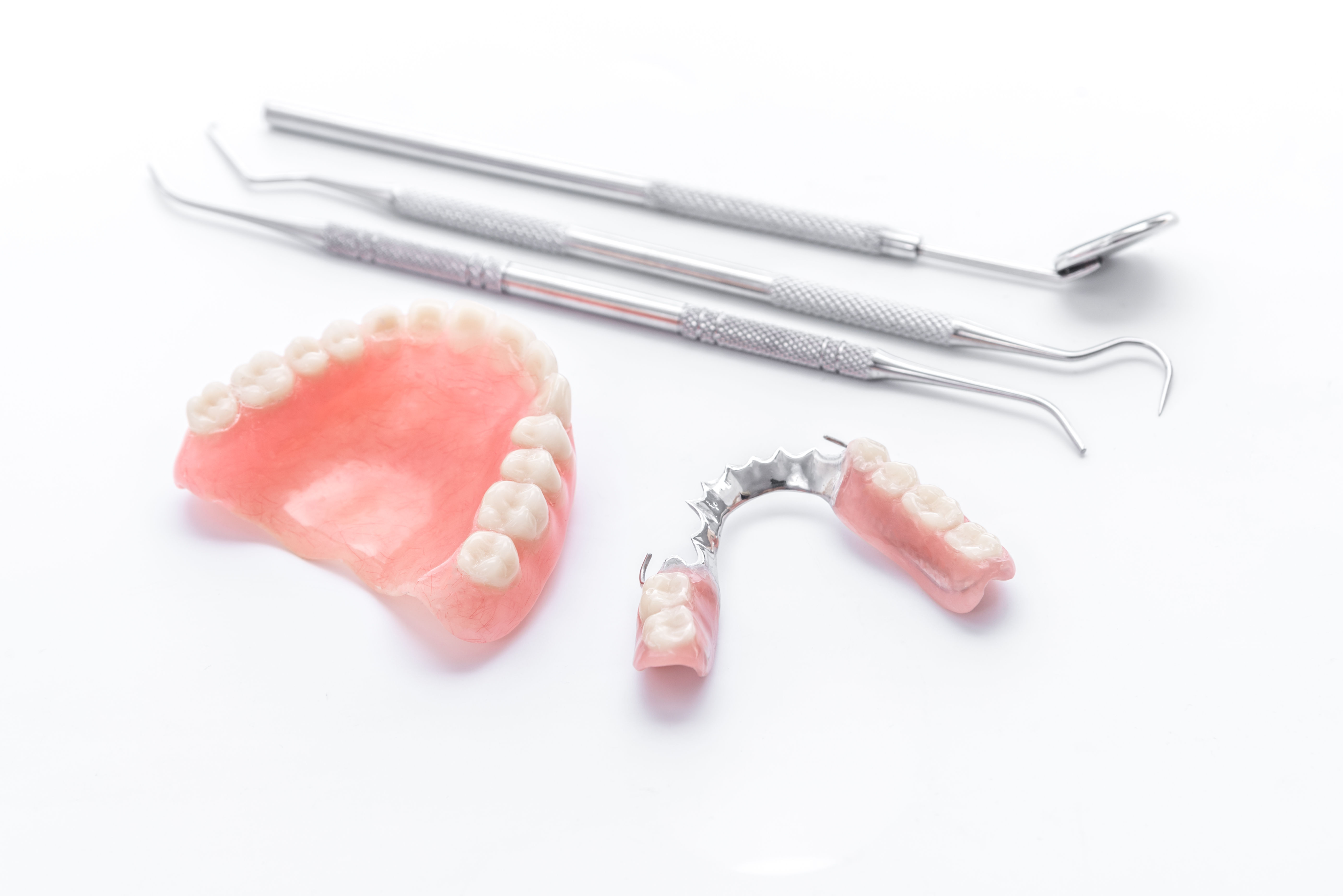Dentures
Whether from disease, malnutrition or genetic disorders, sometimes it is necessary for us to extract all of a patient's lower or upper teeth. While this can be devastating, dentures can provide a second chance at a beautiful smile.
Full Custom Dentures
Having complete dentures help with chewing as well as support one's facial structure and improve speech. With immediate dentures, you can have a full set of teeth while you are waiting for your gums to heal and your bone to realign after having teeth removed. This can take up to six months, so immediate dentures are a great alternative during that time.
Partial Dentures
Sometimes, complete dentures are not necessary. Partial dentures can replace a string of missing teeth, and are secured to your remaining teeth with clasps.
No matter which kind of dentures you choose, you can be assured to receive natural-looking dentures that match your facial structure and desired tooth color.
Bridges
If you want to fill the space left by a missing or removed tooth, a dental bridge might be the solution you've been looking for.
There are several types of dental bridges to choose from:
Cantilever bridges are used to replace a tooth that does not have supporting teeth on both sides of the affected area.
Maryland bonded bridges include artificial teeth and gums, and are held in place by a metal frame.
Traditional bridges are the most common, and literally bridge the gap of an empty tooth space by securing a false tooth using crowns on the teeth on either side.
What does the procedure require?
The procedure requires three visits to our office, and involves first preparing the teeth that will support the bridge. We do this by shaping them to make room for the device and fitting them for crowns. Then, on the next visit, we bond the crowns to the supporting teeth, and molds are taken for the actual dental bridge.
On your third and last visit, we will affix a dental bridge to the supporting crowns. Then, you can go ahead and smile!
Implants
Placed in your jawbone, the implant (a titanium screw post) replaces the root of the missing tooth and fuses with the bone in a process called “osseointegration.” The implant is then fitted with a replacement tooth.
Multiple implants can also be used to support a permanent bridge (replacing several missing teeth) which is cemented or screwed into the implants.
Today’s implants are not susceptible to periodontal disease or tooth decay – the processes that cause breakdown and loss of natural teeth. They are considered permanent – and in most cases can last a lifetime.
Tab heading 4
Lorem ipsum dolor sit amet, consectetur adipiscing elit. Pellentesque quis quam in risus pulvinar ultrices eget non sem. Vestibulum ante ipsum primis in faucibus orci luctus et ultrices posuere cubilia Curae proin accumsan odio.
Tab heading 5
Lorem ipsum dolor sit amet, consectetur adipiscing elit. Pellentesque quis quam in risus pulvinar ultrices eget non sem. Vestibulum ante ipsum primis in faucibus orci luctus et ultrices posuere cubilia Curae proin accumsan odio.
Tab heading 6
Lorem ipsum dolor sit amet, consectetur adipiscing elit. Pellentesque quis quam in risus pulvinar ultrices eget non sem. Vestibulum ante ipsum primis in faucibus orci luctus et ultrices posuere cubilia Curae proin accumsan odio.

